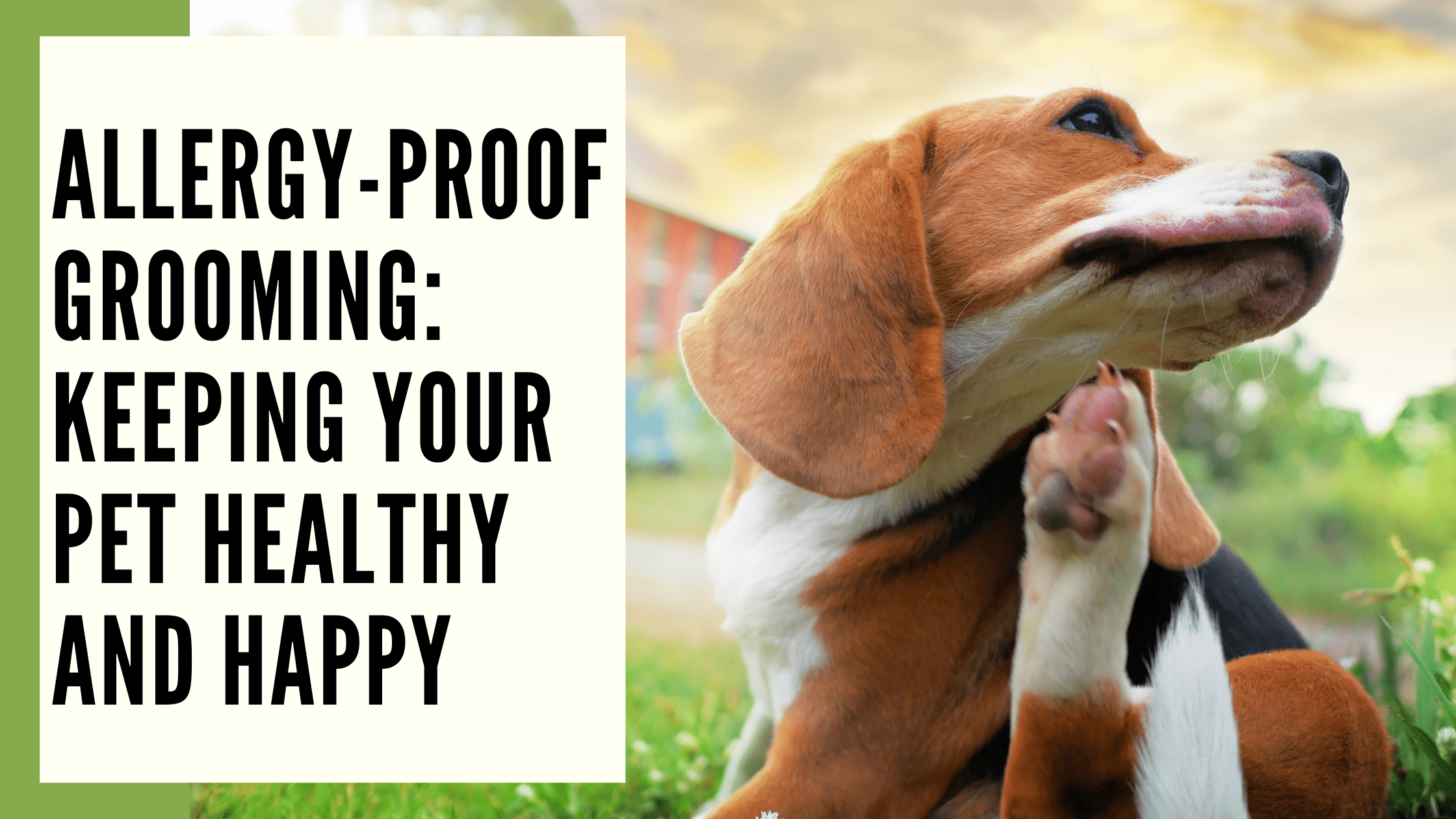Allergy-Proof Grooming: Keeping Your Pet Healthy and Happy
Introduction
Pet allergies significantly affect the quality of life for both pets and their owners. Grooming is key in managing these allergies. This guide aims to provide actionable tips and insights for pet owners to effectively groom their allergy-prone pets, reducing allergens and improving overall well-being.
Understanding Pet Allergies
Pet allergies stem from reactions to proteins in dander, saliva, or urine, with common allergens including pollen, dust, and specific foods. Recognizing these allergens is crucial for effective management through grooming, aiding in reducing the presence of these allergens on the pet’s body.
The Role of Grooming in Managing Allergies
Regular grooming, including brushing and bathing, plays a vital role in reducing allergens on pets’ skin and coat. This process not only helps in allergen removal but also maintains the health of the pet’s skin and fur, which is crucial for allergy-prone pets.
Choosing the Right Grooming Products
For pets with allergies, selecting hypoallergenic and natural grooming products is crucial. These products are specifically formulated to be gentle on the pet’s skin, reducing the risk of exacerbating allergies and promoting skin health.
Grooming Techniques for Allergy-Prone Pets
Effective grooming for allergy-prone pets involves regular brushing to eliminate loose fur and dander, and careful bathing to maintain skin health. It’s important to use techniques that do not irritate the pet’s skin and to groom at a frequency that suits their individual needs.
Professional Grooming vs. Home Grooming
Deciding between professional grooming and home grooming depends on the pet’s breed and specific needs. While professional grooming can offer thorough care, many grooming tasks can be effectively done at home with appropriate tools and knowledge.
Diet and Allergies
A pet’s diet can greatly influence their skin and coat health. Diets rich in essential nutrients, especially omega-3 fatty acids, and free from common allergens, can help in managing allergy symptoms and improving coat quality.
Environmental Control for Allergies
Maintaining a clean home environment is essential in managing pet allergies. This includes regular cleaning of pet bedding and living areas to minimize the presence of allergens, contributing to a healthier environment for both the pet and its owners.
Allergy Treatments for Pets
Various treatments are available for pets with allergies, ranging from over-the-counter solutions to prescribed medications. Natural remedies may also be effective, but it’s important to consult with a vet for the most suitable treatment plan.
Preventing Allergies in Pets
Preventive measures, such as regular veterinary check-ups and early detection, are key in managing pet allergies. These practices help in identifying and addressing allergies before they become more severe, ensuring the pet’s long-term health and comfort.
Impact of Allergies on Pet Behavior
Allergies can lead to discomfort and stress in pets, often reflected in their behavior. Recognizing these behavioral changes is important for timely and effective intervention, ensuring the pet’s well-being is maintained.
Grooming for Specific Pet Breeds
Different breeds require unique grooming approaches, particularly when dealing with allergies. Customizing the grooming routine to accommodate the specific needs of each breed is crucial for effective allergy management.
Common Mistakes in Grooming Allergy-Prone Pets
Avoiding common grooming mistakes is essential in managing pet allergies effectively. Understanding the misconceptions about pet allergies and grooming helps in adopting the right practices for allergy-prone pets.
Testimonials and Case Studies
Sharing real-life testimonials and case studies provides valuable insights and encouragement for pet owners dealing with pet allergies. These stories highlight successful strategies in managing allergies through appropriate grooming and care.
Conclusion
Effective grooming is integral in managing pet allergies. Armed with the right knowledge and practices, pet owners can greatly enhance the well-being of their allergy-prone pets, ensuring a happier, healthier life for their furry companions.
FAQs
1. What are the most common allergens in pets?
Dander, pollen, dust, and certain food proteins are among the most common allergens.
2. How often should I bathe my allergy-prone pet?
The frequency depends on the pet’s breed and skin condition, but generally, once every 4-6 weeks is recommended.
3. Can diet affect my pet’s allergies?
Yes, a diet rich in omega-3 fatty acids and free from common allergens can help manage allergy symptoms.
4. Are there any natural remedies for pet allergies?
Certain supplements and herbal remedies can be effective, but it’s important to consult with a vet before use.
5. Is it better to have my pet groomed professionally?
While professional grooming can be beneficial for some breeds, many aspects of grooming can be effectively managed at home.
